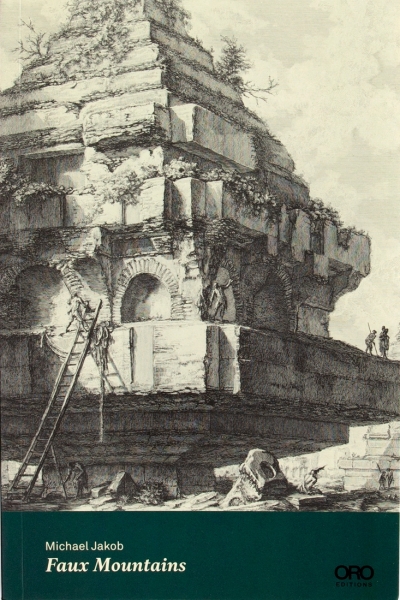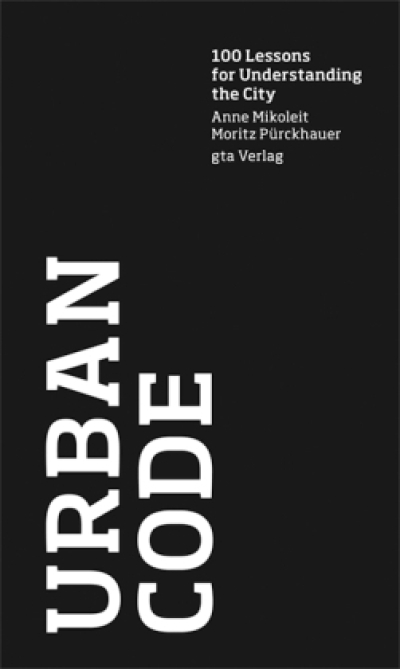Marie J. Aquilino
Beyond Shelter. Architecture for Crisis
El Croquis 156
Valerio Olgiati 1996-2011
Pier Vittorio Aureli
The Possibility of an Absolute Architecture
Anne Mikoleit, Moritz Pürckhauer
Urban Code. 100 Lessons for Understanding the City
Mieke Gerritzen, Geert Lovink, Minke…
I Read Where I Am. Exploring New Information Cultures
Matt Mullican
Notating the Cosmology 1973-2008
A. Fernández Per, J. Mozas, J. Arpa
This is Hybrid. An analysis of mixed-use buildings by a+t
Arno Brandlhuber, Silvan Linden (Hg.)
Disko 20-25 Architektur ohne Architektur
Craig Buckley, Jean-Louis Violeau (Hg.)
Utopie. Texts and Projects, 1967–1978
Anne König, Paul Feigelfeld (Hg.)
LIGNA. An Alle! Radio Theater Stadt
Jürgen Krusche, Günther Vogt
Strassenräume in Berlin, Shanghai, Tokyo, Zürich. Eine foto…
Wim Crouwel
A Graphic Odyssey - Catalogue
David Ake
Source. Music of the Avant-garde, 1966 - 1973
Murray Grigor
Infinite Space. Der Architekt John Launter. DVD
Yona Friedman
Architecture with the People, by the People
Erik Swyngedouw
Civic City Cahier 5. Designing the Post-Political City and…
Lars Lerup
One Million Acres & No Zoning
Toyo Ito
Tarzans in the Media Forest
M, Kelley, J. Shaw, Niagara, C, Loren
Destroy All Monsters Magazine 1976-1979
Ntone Edjabe, Edgar Pieterse (Hg.)
African Cities Reader II. Mobilities & Fixtures
M. Hlavajova, S. Sheikh, J. Winder (Hg.)
On Horizons. A Critical Reader in Contemporary Art
Michael Sorkin
All Over the Map. Writing on Buildings and Cities
Nadine Barth (Hg.)
German Fashion Design 1946-2012
Simon Reynolds
Retromania. Pop Culture's Addiction to its Own Past
Stan Allen, Marc McQuade (Hg.)
Landform Building
Fredric Jameson
Representing Capital. A Reading of Volume One
Magdalena Taube, Krystian Woznicki (Hg.)
Modell Autodidakt
e-flux journal
Are You Working Too Much? Post-Fordism, Precarity, and the…
PIE Books (Hg.)
Paper & Cloth. Ready-to-Use Background Patterns(+DVD)
McKenzie Wark
The Beach Beneath the Street. The Everyday Life and…
Pedro Barateiro, Ricardo Valentim (Hg.)
Activity (is to a group what content is to platform)
El Croquis 155
Sanaa 2008-2011
Laurie Anderson, Trisha Brown, Gordon…
Pioneers of the Downtown Scene
Curtis, Rees, White, Ball (Hg.)
Expanded Cinema. Art, Performance, Film
Kaminer, Robles-Dúran, Sohn (Hg.)
Urban Asymmetries
Nico Stehr, Reiner Grundmann
Die Macht der Erkenntnis
Hans Ulrich Obrist
Ai Weiwei Speaks
Abel, Evers, Klaasen, Troxler (Hg.)
Open Design Now. (why design cannot remain exclusive)
AA Bronson, Peter Hobbs
Queer Spirits
Momus
Solution 214-238. The Book of Japans
A. Avanessian, L. Skrebowski (Hg.)
Contemporary Art and Aesthetics
2G N. 57
Njiric+ Architekti
Lucia Nagib
World Cinema and the Ethics of Realism
Huda Smitshuijzen, Abi Fares (Hg.)
Typographic Matchmaking in the City
H. F. Mallgrave, D. Goodman
An Introduction to Architectural Theory. 1968 to the Present
D. Mertins, M. W. Jennings (Hg.)
G: An Avant-Garde Journal of Art, Architecture, Design and…
Alexander Bolton
Alexander McQueen. Savage Beauty
Marc Barbey (Hg.)
Hommage à Berlin. Photographien
Jianping He (Hg.)
Book Worm
Claire Doherty, Paul O'Neill (Hg.)
Locating the Producers. Durational Approaches to Public Art
Professur Theorie und Geschichte der…
Architecture in the Age of Empire / Architektur der neuen…
Garth A. Myers
African Cities. Alternative Visions of Urban Theory and…
Jean-Louis Cohen
Architecture in Uniform. Designing and Building for the 2nd…
Christopher Dell
Replaycity. Improvisation als urbane Praxis
Hans Dickel, Lisa Puyplat (Hg.)
Reading Susanne Kriemann
Byung-Chul Han
Shanzhai. Dekonstruktion auf Chinesisch
Kaoru Takahashi (Hg.)
Hello! UK Graphics. Graphic Design in the UK since the 1980s
Bruce Jenkins
Gordon Matta-Clark. Conical Intersect
Andreas Gelhard
Kritik der Kompetenz
Klanten, Hellige (Hg.)
The Modernist
Lars Spuybroek
Textile Tectonics. Research and Design
Josep Lluís Mateo
After Crisis. Contemporary Architectural Conditions
Louis Luthi
On the Self-reflexive Page
Jan Kempemaers
Spomenik
Vilém Flusser
Dinge und Undinge. Phänomenologische Skizzen
O.M. Ungers
Morphologie City Metaphors
Lisa Taylor & Gardeners of Seattle…
Your Farm in the City
Hassenpflug, Giersig, Stratmann
Reading the City. Stadt lesen
Butler, Habermas, Taylor, West
The Power of Religion in the Public Sphere
Richard Fairfield
The Modern Utopian. Alternative Communities of the 60s and…
Jochen Rädeker, Kirsten Dietz
Reporting. Unternehmenskommunikation als Imageträger
Lorey, Nigro, Raunig (Hg.)
Inventionen 1. Gemeinsam. Prekär. Potentia. Dis-/Konjunktion
Jimini Hignett
The Detroit Diary
Klanten, Mollard, Hübner (Hg.)
Behind the Zines. Self-Publishing Culture
Tom Holert
Civic City Cahier 3. Distributed Agency, Design’s…
El Croquis 154
Aires Mateus 2002-2011
Paul Van Beek, Charles Vermaas
Landscapology. Learning to Landscape the City
Jan Ole Arps
Frühschicht. Linke Fabrikintervention in den 70er Jahren
Detlef Mertins, Architecture Words 7
Modernity Unbound
Gunter Reski, Marcus Weber (Hg.)
Captain Pamphile. Ein Bildroman
Amy Allen (Hg.)
Democracy in What State?
D. Hauptmann, W. Neidich (Hg.)
Cognitive Architecture. From Biopolitics to NooPolitics
Stefan Sagmeister
Sagmeister: Another Book about Promotion and Sales Material
Enzo Mari
The Intellectual Work. Sixty Paperweights
Bettina Allamoda
Catwalk to History - A Sourcebook
Peter Petschek, Siegfried Gaß (Hg.)
Schatten konstruieren. Pergolen, Zelte, Pavillons, Seile,…
Will Jones (Hg.)
Architects' Sketchbooks
Arno Brandlhuber, Silvan Linden (Hg.)
Disko 16-19. u.a. The New Deathstrip, Townhouse
Martin Ebner, Florian Zeyfang (Hg.)
Poor Man’s Expression
El Croquis 151
Sou Fujimoto 2003-2010
Caleb Kelly (Hg.)
Sound (Documents of Contemporary Art)
Terry Myers (Hg.)
Painting (Documents of Contemporary Art)
Wilfried Dickhoff, Marcus Steinweg (Hg.)
Inaesthetics 2
Nancy Holt
Time Outs
Slinkachu
Big Bad City
Ed Annink, Max Bruinsma
Lovely Language. Words Divide Images Unite
Gwen Allen
Artists' Magazines. An Alternative Space for Art [pb]
Michaela Meise
Preis dem Todesüberwinder


































































































